What and how to paint the outside of a wooden house? In this article we will look at several scenarios for applying paint to wood and old coatings.
In addition, it is advisable for us to select the optimal types of varnishes and paints for each case.
Why is this necessary?
Let's define the tasks.
Why do you need exterior painting? wooden house?
- To protect wood from ultraviolet radiation. The reason for the darkening of the surface of old log houses is precisely the effect of ultraviolet radiation.
- To reduce hygroscopicity. With the onset of frost, wet wood is filled with ice crystals, which have a larger volume than water. Microcracks and fiber breaks significantly reduce the life of the walls.
Helpful: The problem affects more than just the tree. Cement plasters They are no less afraid of freezing water in their pores.
- To prevent wood rotting and damage by insects. Carpenter beetles readily destroy logs and beams, but they disdain paints.
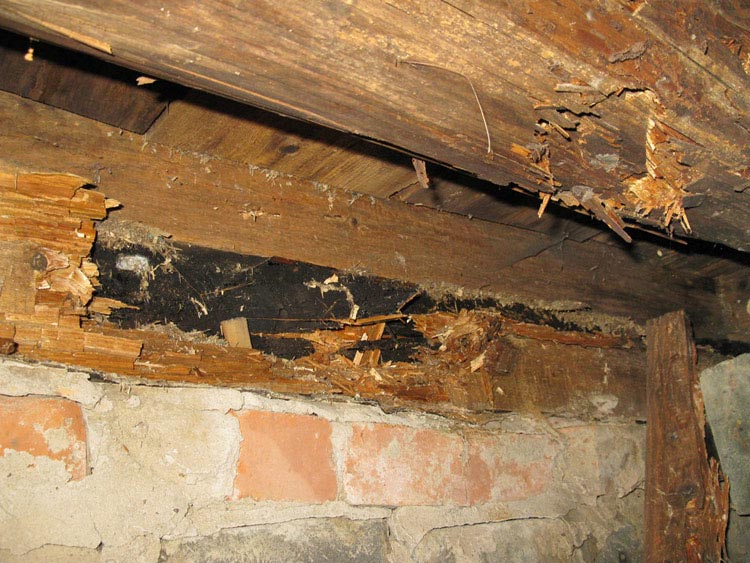
Restrictions
At wrong choice coatings Painting the outside of a wooden house can do harm, not good.
What do the key requirements for paint and varnish materials look like in our case?
- They must be impenetrable to the ultraviolet part of the spectrum. The instructions follow directly from the first point on the list of painting goals.
- The coating must be hydrophobic. The reasons are again obvious.
- Finally, the main thing: the paint layer must be vapor- and breathable. Argumentation?
At your service:- The main advantage of a wooden house is natural ventilation. Even with closed windows In such a house you can breathe very easily. The reason is that a significant part of the air exchange with the street occurs directly through the walls.
- One of basic rules construction says: the vapor permeability of walls should not decrease from the inside to the outside. Otherwise, instead of migrating water vapor from more humid interior spaces to the street, we will get moisture accumulation in the thickness of the walls. The consequences are a drop in their heat-insulating ability and inevitable wood rot.
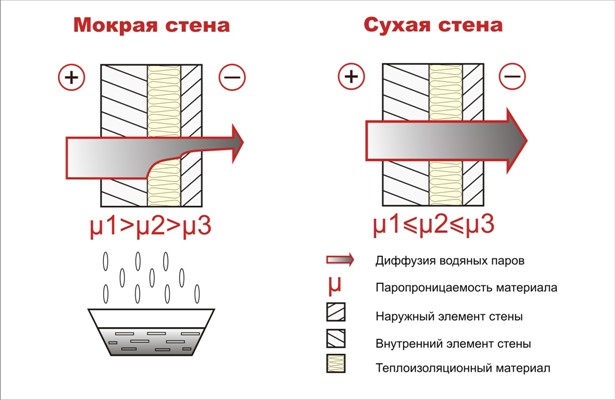
Let's get started
So, we are painting the outside of a wooden house. General principles we have studied the selection of paint and varnish materials; time to get specific. Let's look at a few typical scenarios.
New building
Given: new house from rounded logs or timber chamber drying. As an option - a building, . Our task is to improve it as much as possible appearance and, most importantly, maintain the result for as long as possible.
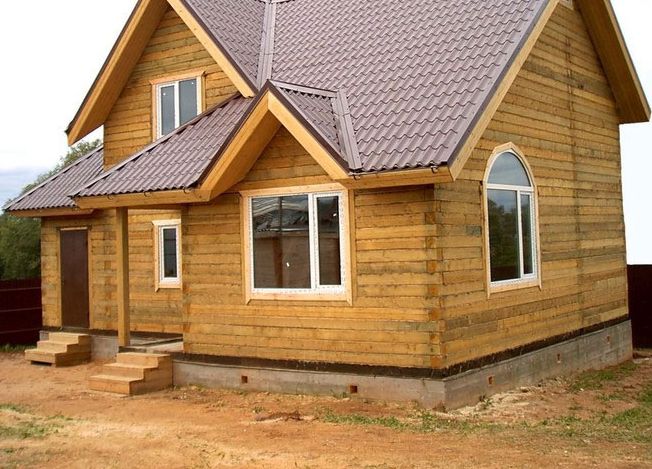
Let us allow ourselves a small lyrical digression. Wooden buildings not only provide their inhabitants with a unique microclimate. They are also very beautiful - even those built from the cheapest spruce and pine, not to mention larch, cedar and noble species.
The obvious solution is to use a transparent or translucent composition to cover the structure.
What options will the modern market offer us?
- Water-dispersion varnishes based on acrylic resins are perhaps the best option in terms of cost, weather resistance and vapor permeability, which is important for us. Varnishes can be completely colorless or tinted.
Among other things, these coatings are characterized by extremely fast drying (no more than an hour before applying the next layer) and a fairly long service life (from five years). Since water acts as a diluent, the varnishes are completely odorless and absolutely safe. - Oil-wax impregnations. Unlike varnishes, they do not form a film on the surface of the wood, but impregnate it to a depth of a couple of millimeters to a centimeter. The surface in this case remains vapor permeable; at the same time, it acquires hydrophobic properties.
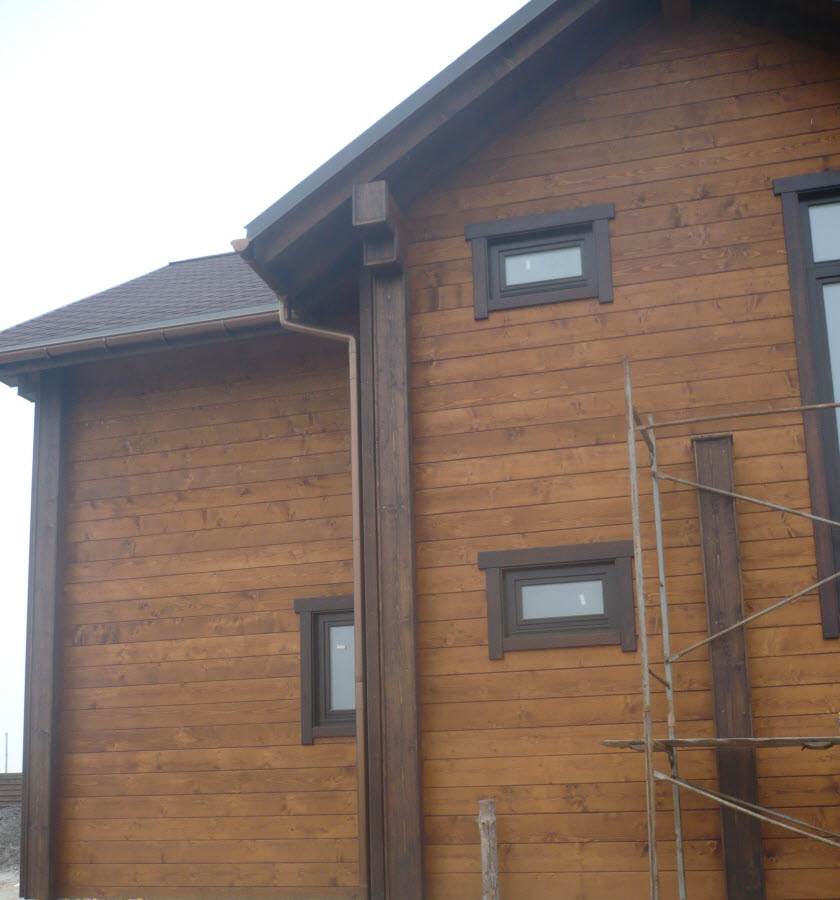
Please note: impregnation will have to be repeated at intervals of about three years.
All oils are volatile, although they evaporate much more slowly than water or volatile hydrocarbons.
Before applying any type of coating, the surface of the wood is pre-impregnated with an antiseptic composition.
In case of using lumber natural humidity The technology for painting the outside of a wooden house is somewhat more complicated than usual. The walls are impregnated with an antiseptic composition twice and left without finishing for a period of shrinkage (usually about a year).
It is better to use not a water-soluble antiseptic, but compositions with ultraviolet barriers and primers (a typical representative is Pinotex Ultra): in this case, the walls will not fade and will avoid even partial destruction by bad weather.
The technology for applying coatings of any type is not particularly exotic:
- The walls are carefully swept to remove dust. When using laminated veneer lumber, surface preparation ends here; It is advisable to sand solid wood beams to complete absence irregularities that can be felt by the palm. Sanding tens of meters of walls with your own hands is, to put it mildly, tedious, so it’s worth investing in a sanding machine.
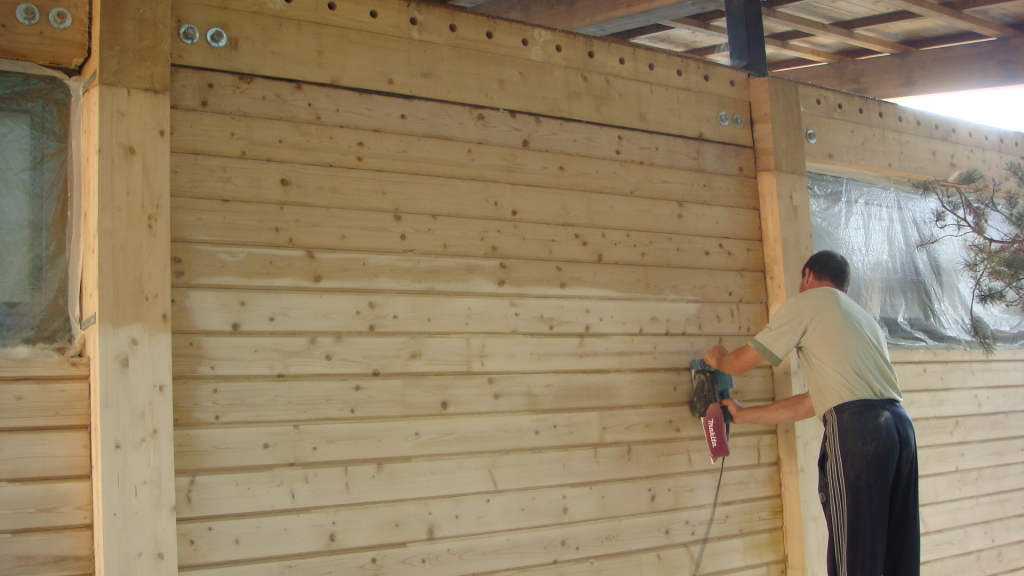
- The varnish is applied with a wide brush or long-haired roller. The minimum number of layers is two; After drying the first layer, it is advisable to sand the surface again: the varnish will raise fine pile on the surface of the wood. The impregnation is applied with a swab or rubbed in with a brush.
Old wood
Scenario number two implies that we have to renovate walls that have stood for a long time without protection from ultraviolet radiation and atmospheric influences.
Painting the outside of an old wooden house will inevitably run into several problems.
- Wood darkens when exposed to ultraviolet light. Transparent and translucent coatings will look somewhere between “strange” and “not good” on a black frame.
- Fluctuations in temperature and humidity leave logs or timber with deep cracks that will stand out on any painted surface.
Please note: the ends of the timber or logs crack the most.
The reason is more intense evaporation of moisture along the fibers.
- Mold and rot do not improve the condition of the house either. Often, before painting, a log house needs to completely replace the lower crowns.
- Finally, even wood that has not been damaged by fungus becomes dilapidated over time. When trying to apply paint, the surface of wooden walls may crumble and crumble.
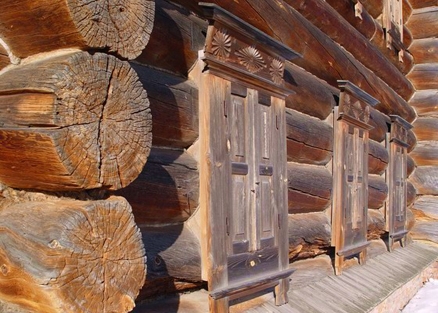
Fortunately, these problems can be solved.
- Antiseptic compounds will help get rid of mold. Of course, where the wood has not yet been destroyed.
- Special compositions for deep bleaching of wood (for example, Senezh Effo) or... ordinary chlorine-containing cleaners will help to whiten a darkened surface. The price of the same whiteness based on sodium hypochlorite is approximately four times lower than that of specialized bleaches.
- To seal cracks, you can safely use acrylic facade putties. For painting - any; under translucent varnishes - tinted in the color of wood. It is better not to use transparent compounds on old wood: even after restoration measures, its defects will be noticeable upon closer inspection.
- Penetrating facade primers will help strengthen the surface. For example, the domestic primer Proacryl-Grunt is intended for preparing the surfaces of concrete, drywall, plaster and wood for painting.
It is not difficult to find compounds on sale that combine several functions. Thus, Sansin Foundation wood primer strengthens the surface, kills fungus, provides UV protection and gives the surface hydrophobic properties.
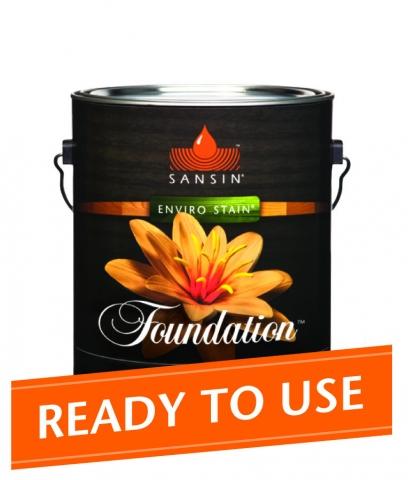
The best material for actually acrylic base. They are resistant to abrasion, precipitation, fading and have excellent vapor permeability.
Paint on paint
How to paint the outside of a wooden house using old paint? The situation is quite typical: previously painted walls will sooner or later require re-application of a protective coating.
The algorithm of actions is simple:
- Peeling paint.
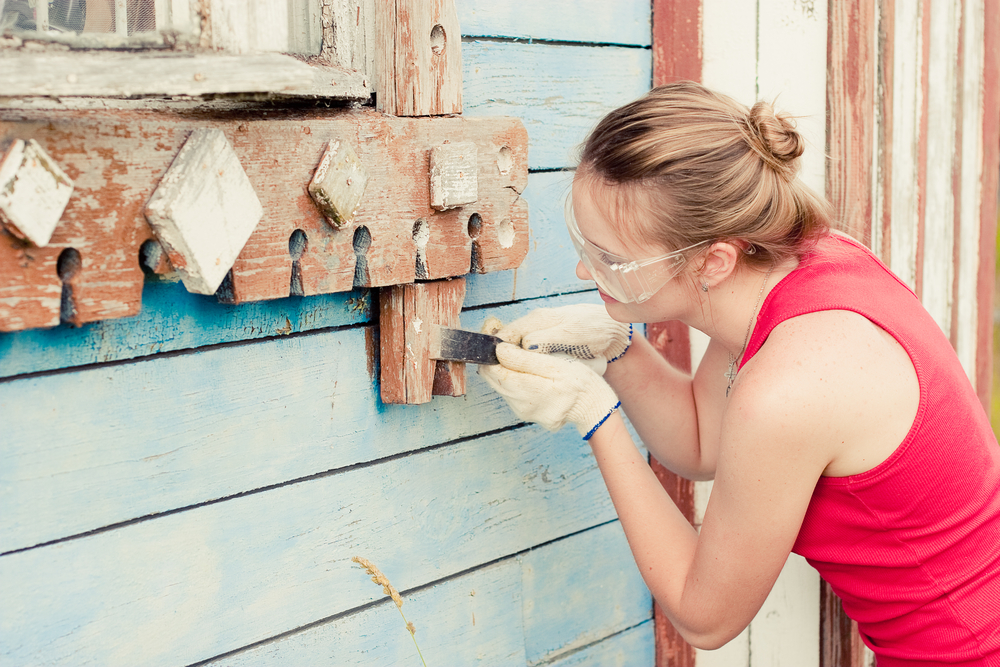
- The remaining irregularities are sanded down.
- The walls are then painted with the same type of paint that was previously used. If the walls were painted with oil paint, this is what you should buy in the store this time; acrylic paints fit perfectly on acrylic and so on.
Useful: where there is no paint completely, the surface is pre-primed.
For acrylic paints, acrylic penetrating primers are used; For oil paint, the wood is treated with drying oil.
As an option, instead of a primer layer, you can use paint diluted to the consistency of skim milk.
Conclusion
The video in this article, as always, will offer the reader additional information. Good luck with the renovation!
To ensure that your home looks like no other, its façade can be decorated in an original way. For this purpose they are used various materials: siding, decorative plaster, decorative rock and brick, all kinds of paint and varnish mixtures, and so on. Painting the exterior of your home is a frequently chosen finishing option. In this case, it does not matter much what type of materials the building frame is constructed from. Modern market paint and varnish products offers a wide range of products to suit any need.
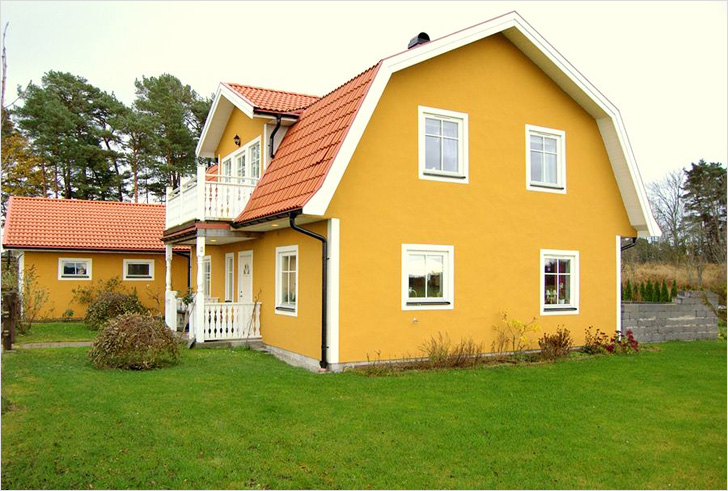 Painting is a popular way to decorate the facade of a house
Painting is a popular way to decorate the facade of a house Plastered walls frame houses traditionally painted (for example, panel house from SIP blocks). Exterior painting work on wood, brick, and stone is no exception. When choosing appropriate materials, it is important to think not only about the decorative appeal of the exterior walls of the house, but also about the quality of protection and durability of the finish.
Choosing paint for the type of base
Which stage preparatory work more important: choosing paint, and then assessing the type of base, or vice versa? It seems to us that one without the other is simply impossible. After all, if you buy some kind of painting mixture without taking into account the characteristics of the materials, you can make a big mistake. If the surface and paint “do not interact,” then there can be no question of any high-quality finishing. Most likely, you first need to assess the volume and quality of the work, and only then go shopping.
So, under concrete wall you need to buy paint that won’t “pull” out of cement mortar alkali. Otherwise, the foundation will simply crumble and collapse. Maximum alkali resistance facade paints on acrylic base.
But a wall made of mineral materials can be successfully painted with vapor-permeable (“breathable”), but at the same time waterproof paint. Silicone painting mixtures do an excellent job with this task.
Lately, you’ve often seen structures made from SIP panels on construction sites. The building material is a sandwich of two particle boards OSB and polystyrene foam layer. The structure of such blocks is erected quite quickly, but at the same time it is not heavy. The material has excellent sound and heat insulation properties. Subsequently, a house made of SIP blocks can be finished with various modern materials, including .
Plastering a frame house made from SIP panels from the outside is as easy as shelling pears, since SIP systems have good compatibility with plastering materials. The SIP base is very stable and interacts well with finishing materials applied to it.
There are three steps required here:
- reinforcing mesh;
- primer;
- final plastering.
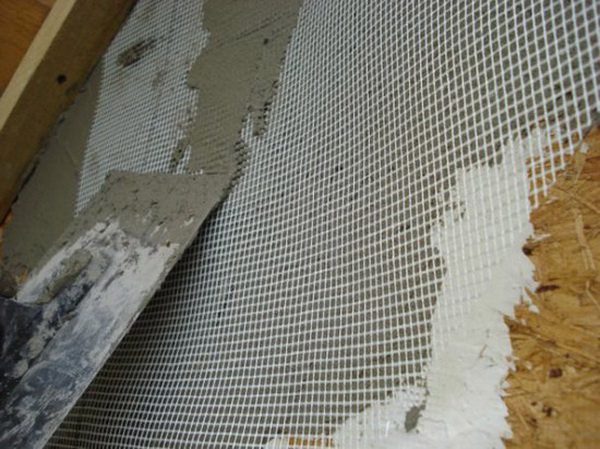 Due to the good compatibility of SIP panels with plastering materials, frame house It's easy to plaster the outside
Due to the good compatibility of SIP panels with plastering materials, frame house It's easy to plaster the outside Types of facade painting mixtures
A brick wall can be successfully painted with an acrylic latex mixture. The material has excellent characteristics:
- fire safety;
- breathability;
- increased adhesive properties;
- moisture resistance;
- reliable protection of walls from external (atmospheric) influences;
- easy application;
- quick drying;
- decorative appeal.
A significant drawback, however, is the low resistance to mechanical stress (propensity to abrasion).
The most popular in the market of paint and varnish products are water-dispersed facade mixtures. They differ in composition and, accordingly, in properties. Acrylic dispersions have been and remain economically attractive. High-quality exterior finishing can last more than 10 years without repainting (although there are cases of longer periods).
Painting a house with polyvinyl acetate water-dispersion paint will be relatively inexpensive. But such finishing will not last long in humid climates, because PVA paints are not waterproof.
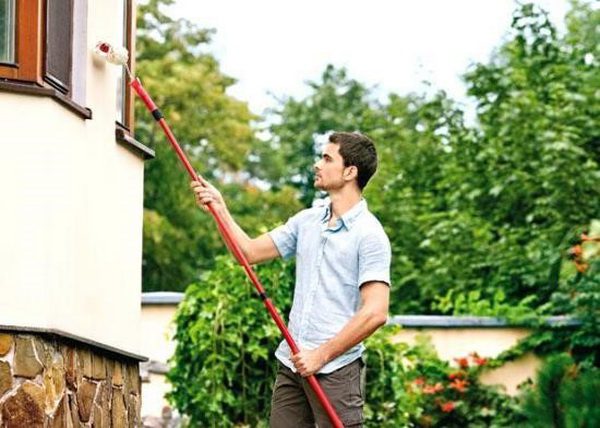 High-quality finishing of the facade of a house can last more than 10 years without the need for repainting
High-quality finishing of the facade of a house can last more than 10 years without the need for repainting Styrene-butadiene water-dispersion paints have also received some negative reviews regarding performance. A significant disadvantage is photosensitivity.
A plastered panel house made of SIP blocks can be easily painted with cement paint. It won't be expensive. In addition, the material is resistant to moisture. But such mixtures also have disadvantages, for example, the appearance of mold.
Lime paints have antifungal properties and are breathable, but, unfortunately, they quickly fade and are washed off. Silicate-based paints are resistant to ultraviolet exposure and moisture. They belong to “breathable” finishing materials. The average service life is facade finishing– up to 20 years. But this paint is inelastic, so when thermal expansion a panel house may crack along its decorative layer.
We have already mentioned silicone paints for working outside the house. The material has earned the most positive reviews because:
- moisture resistant;
- vapor permeable;
- provides excellent adhesion to the base;
- does not fade in the sun;
- resistant to temperature fluctuations environment;
- antistatic.
Only small nuances marred such a good picture: the high cost of the material and average wear resistance (and therefore durability).
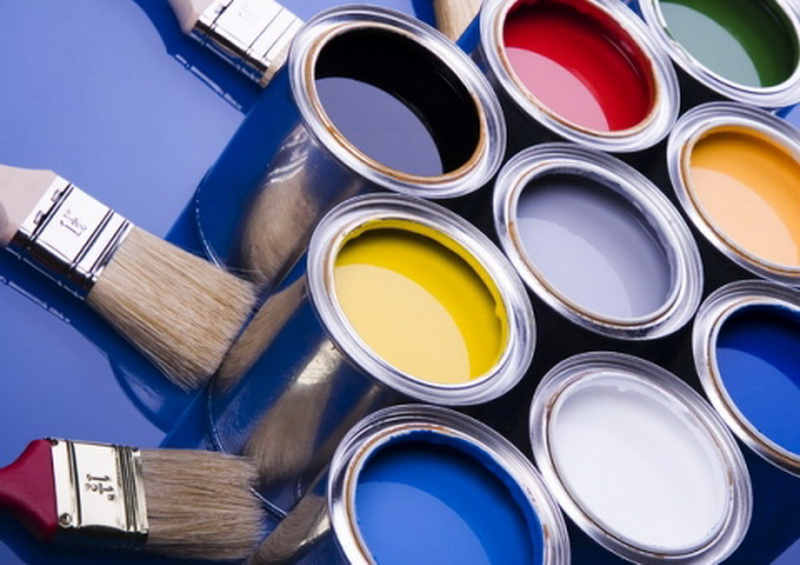 Silicate paints - “breathable” finishing material
Silicate paints - “breathable” finishing material Painting technology
You need to buy enough paints and even a little more. The calculation of material consumption is determined according to the following scheme: the total area of the external walls for painting, multiplied by average consumption selected paint (ml/m2). All this should be multiplied by the number of layers (minimum two).
The consumption of finishing materials will be reduced if you apply paint over a primer. Also, consumption directly depends on the viscosity (thickness) of the substance.
Any type of substrate must be properly prepared for painting. The stone-brick surface should be cleaned of efflorescence, washed from dust, dirt, stains, mold, limescale. For this purpose, both soap and water solutions and special cleaning agents are used.
A freshly plastered panel house made of SIP blocks is already ready for painting (don’t forget to prime it). But the old plaster should be “tapped”, loose fragments removed, seams, cracks and other defects repaired. Be sure to remove dust and dirt.
Next we paint as follows: on lime plaster - with lime paint, on cement - with cement paint, acrylic paint– for coating based on synthetic resins. Silicone and silicate paints are best used in conjunction with an appropriate primer.
The maximum drying time for one layer of paint is a day. Subsequent layers can be applied without waiting for the previous one to completely dry. Information about the painting stages is usually indicated on the product packaging.
The following materials are used: a wide paint brush, a lint roller or a sprayer. The mixture is ground horizontally and vertically. To avoid the formation of streaks, it is recommended not to take long breaks while painting one wall.
If you approach each stage of finishing the facade of a house professionally, then the result will justify itself. If you are not sure that you can handle the assessment and execution of the work yourself, involve professional builders. Qualified assistance will never be superfluous, especially in such a specific matter. After all, the appearance of a house is practically the face of its owner.
As you know, facade paints and varnishes not only decorate wooden walls, but also protect them from insects, ultraviolet radiation, winds, and temperature changes.
But what will protect the paint itself from unwanted influences? How can you be sure that on a façade as beautiful as the one in the title photo, the coating will not peel off or begin to fall off in petals in just two or three years?
About what paint for the facade of a wooden house, taking into account our climate, is the most the best option, and will be discussed in this article.
Well, manufacturers know how to advertise their products. Whatever paint you take, the instructions on the package say that it forms an elastic film that ideally protects wood from all types of atmospheric exposure, and resistant to changes in temperature and humidity.
- In fact, this super-resistant film cracks after just two winters, and the walls don’t look much better. attractive appearance. Oddly enough, this most often happens with paints from famous European manufacturers - but, of course, not all. Is it really the poor quality of their products that is to blame?
Note! The thing is that in countries with a warm climate there is simply no way to test paint for frost resistance, since this very frost simply does not happen there. Therefore, experts advise: “If you take imported paint, then it should be Swedish or Finnish, but not from manufacturers in Mediterranean countries: Italy, Spain, Greece.”
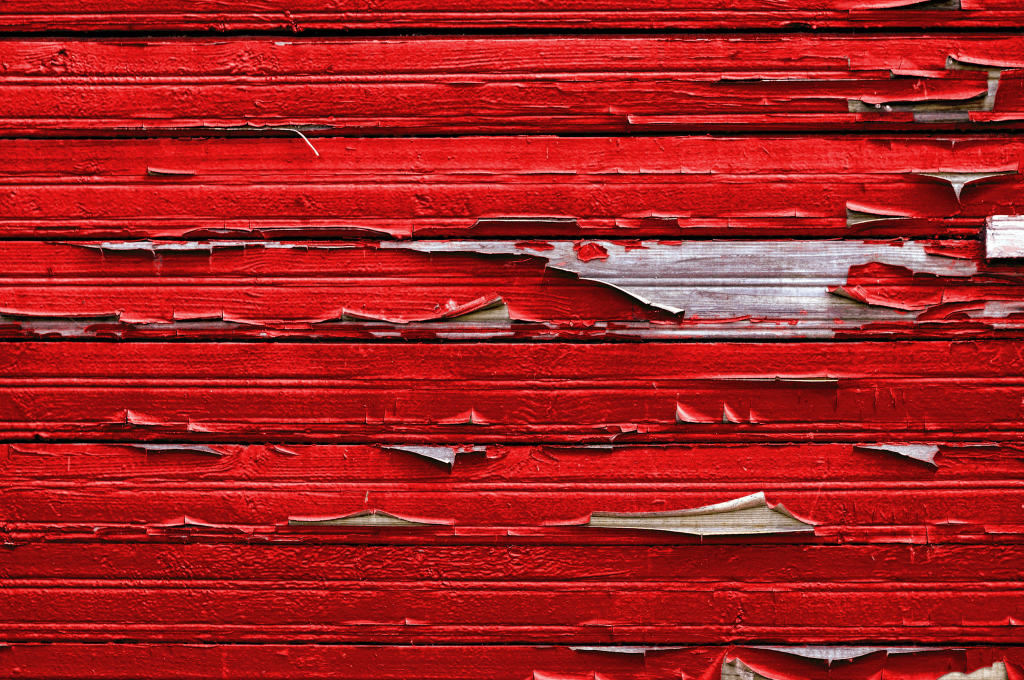
- Let us note right away that paints containing white spirit, turpentine, and drying oil do not behave very well in the cold. Basically, these are alkyd and oil compositions. Manufacturers alkyd primers and enamels claim that they are resistant to temperatures from -50 to +120 degrees, but do not guarantee that the coating will last more than three years.
Oil paints cannot withstand even this, and the only criterion for their selection by the buyer was and remains low price. Yes, it’s understandable: if a person, for example, needs to paint a modest country house, he doesn’t want to incur large expenses for this.
Repainting a small building with your own hands is also not difficult. And then, this paint still has some advantages, so let’s talk about it in more detail.
Characteristics of oil paints
Oil-based paints that our company produces today chemical industry, differ in characteristics and color range from Soviet-style paints, like heaven and earth. Their durability depends on the mass fraction of film-forming components, which in good paint should not be lower than 26%.
- It is these substances that contribute to the creation of an impenetrable film when applying oil-based coatings to the surface, and the higher their percentage, the longer the coating will last. You just need to keep in mind that too high their content reduces the shelf life of the paint after the container is depressurized.
- When air enters the can, the paint turns into a thick lump in a few hours, which can no longer be brought to a working consistency by any solvent. An important parameter of oil compositions is the amount of volatile substances. In high-quality options, their quantity should not exceed 10%.
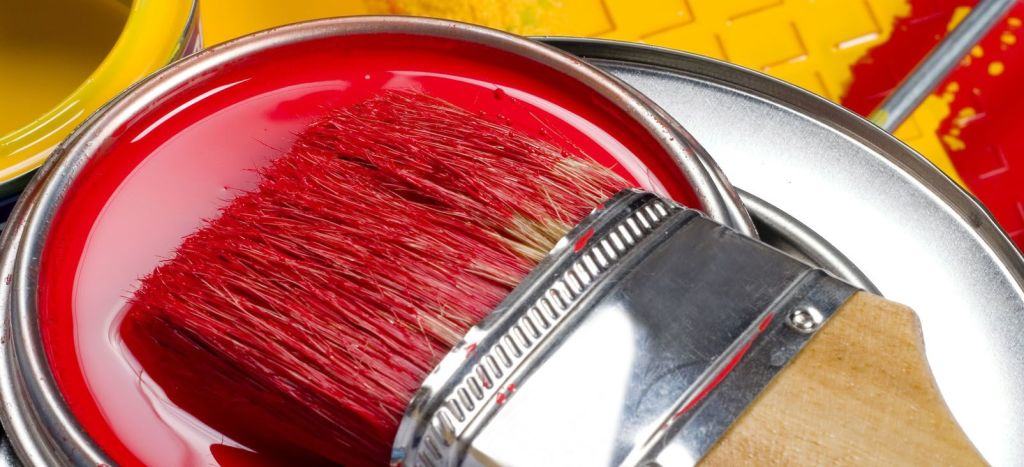
- It is precisely because of volatile substances that have a pungent odor and are also toxic that oil paint is practically not used today. But when working outdoors, this is not so relevant. The disadvantages of oil-based paints and varnishes include the fact that they take the longest time to dry - at least two days.
The hardening time of the film, like the fluidity of the paint, depends on the level of its viscosity. IN quality material it should vary between 60-135 units. But the hardness of the resulting coating can be considered an undoubted advantage, since this is what determines how long the paint will last on the facade.
The nuances of using oil-based paints
Wood, when compared with other types of substrates, has a fairly porous structure. Accordingly, paint consumption on a log wall will be an order of magnitude higher than, for example, on a plastered surface.
For example: on average, oil paint consumption is 150-170g/m2. In the case of wood, especially poorly planed, this figure increases to 350-380g/m2.
So:
- Due to the low cost of oil paint, it is not as expensive as when using the same alkyd paints. The absorption of paint also depends on the degree of grinding. Judging by this attribute, there are two options: liquid-based paints and thick-grated paints.
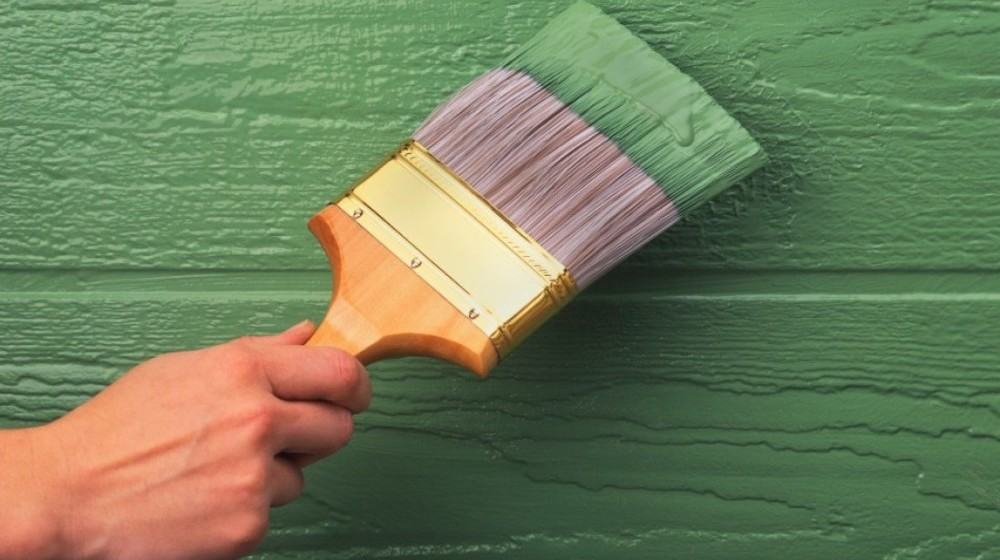
- The former are ready for use, the latter are diluted with turpentine or drying oil before use. By the way, it depends on which of these solvents is used whether the surface will be matte or glossy. Drying oil adds gloss, which looks very good when painting windows. Well, for external walls, you see, no gloss is needed.
- Quite the contrary: to make the paint as matte as possible, add a hot solution to it laundry soap. The calculation is as follows: one bar of soap per three-kilogram jar of paint. As for the color range, if you wish, you can buy paints tinted by the manufacturer (see). But most often they are sold in white, which allows a person to choose the shade of their choice.
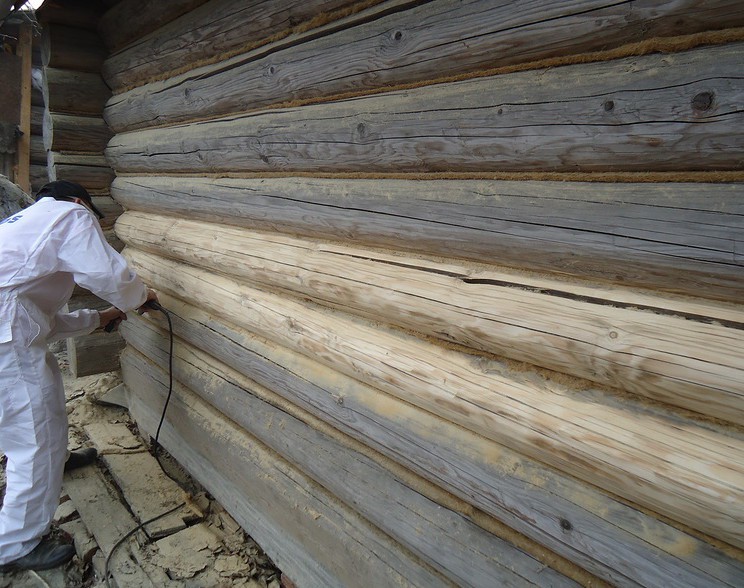
- Regarding durability, in defense oil paints we can say this. Not always the cause of destruction of integrity paint coating, is precisely the paint. It can quickly peel off simply due to poor surface preparation - and especially when it comes to the walls of a house being renovated. It is very important to remove the remnants of the previous paint, or even better, remove it along with old paint top layer of fibers, carefully remove dust.
Before application oil coating, the walls should be primed with the same paint, but diluted with drying oil to a liquid state. During this treatment, the wood will be saturated, and the paint consumption for the finishing coat will not be so large.
Believe me, the right approach to painting work, will allow you to get an excellent result that will please the eye for at least six years.
Aqueous dispersions
Water-soluble paints have proven themselves best as façade coatings. This is a large group of water-dispersion paints, which occupy a leading position in the team of paints and varnishes. Many of them are universal and can be used for interior works(see), and for painting facades, which the consumer must be informed about on the label.
So:
- The simplest option is compositions based on polyvinyl acetate, as well as butadiene styrene, which we used to call. But for exterior finishing they are not suitable, as they are highly susceptible to ultraviolet radiation and moisture. But the new generation of paints, made on the basis of polymer resins, are completely devoid of these shortcomings.
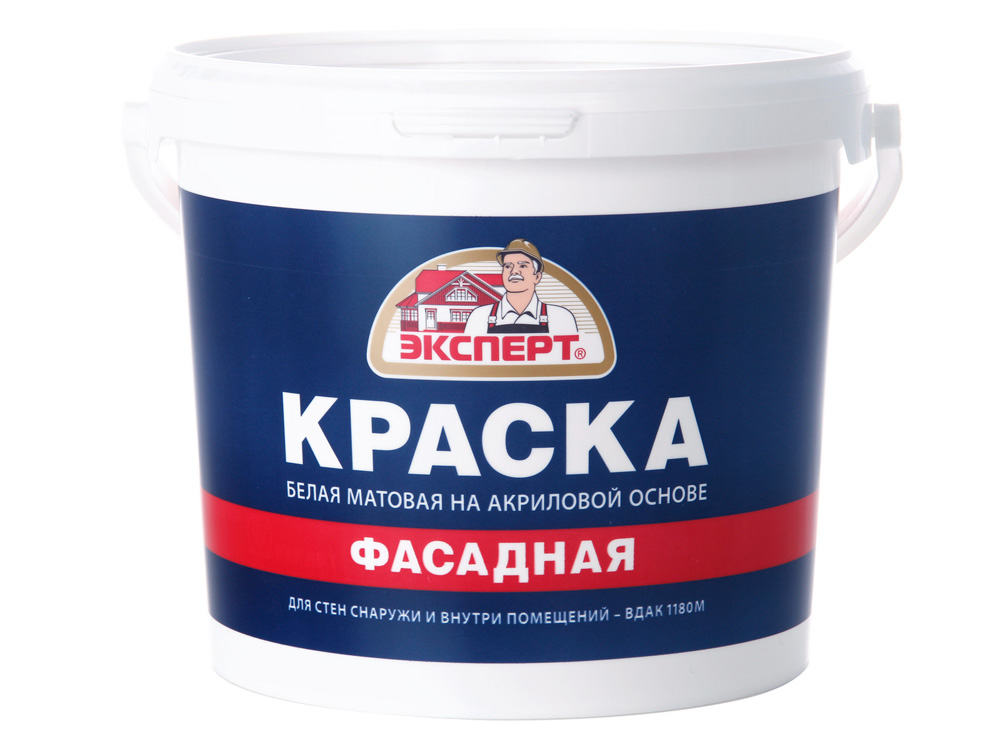
- All types of water-dispersion paints are united only by technology in which an emulsion is obtained from two immiscible substances. IN in this case, one of these substances is water, and the other is PVA, butadiene styrene, acrylic copolymers, latex, silicone. A suspension of these substances, the molecules of which are distributed in water, is called a dispersion - it is they that give the emulsion certain properties.
- Waterborne paints work very differently than oil paints. When dry, the dispersion coating polymerizes, which is similar to the setting of cement or gypsum mortars. Being in a plastic state, the emulsion can be diluted with water without any problems, but when the film sets, it becomes resistant to moisture. Accordingly, liquid paint is afraid of low temperatures, but the finished coating is not.
- The list of polymers acting as a dispersion in emulsion paints is quite wide, but the most popular are acrylate compositions. They are characterized by stability, low price, and long shelf life. And they best tolerate temperature changes and exposure to sunlight.
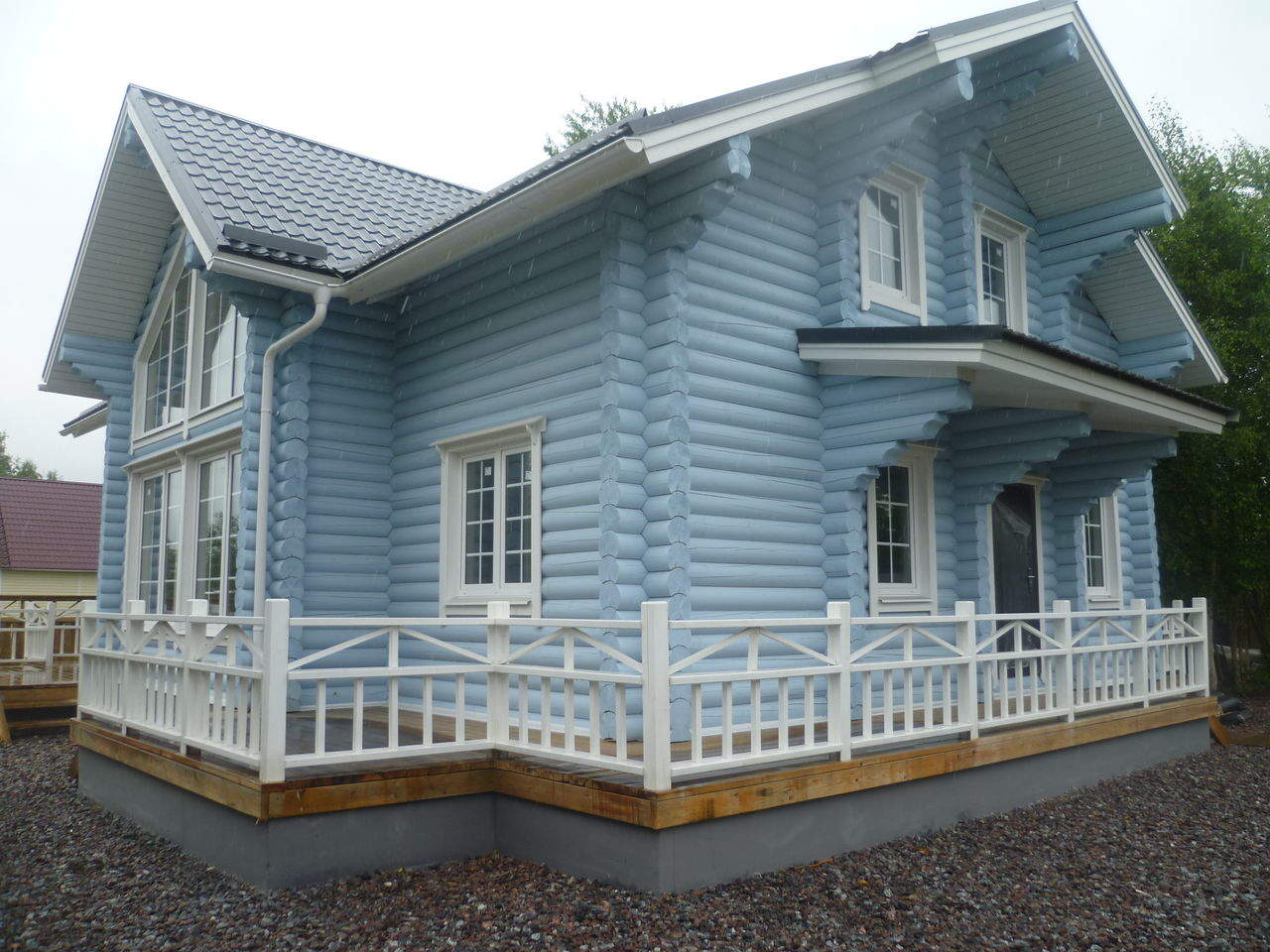
- In addition to the water-polymer combination, fillers in the form of talc, cellulose or chalk are added to dispersion paints, which give it the desired thickness. For whiteness, additives such as zinc white and a substance called titanium dioxide are used. Water-soluble paints are produced only in white, and are tinted immediately before starting work.
- The video in this article or articles directly devoted to this topic will tell you how to do this. Let's just say that it is not at all necessary to do this yourself, since in every specialized store you will be offered a computer tinting service, in which you choose the desired shade from fan-based catalogs.
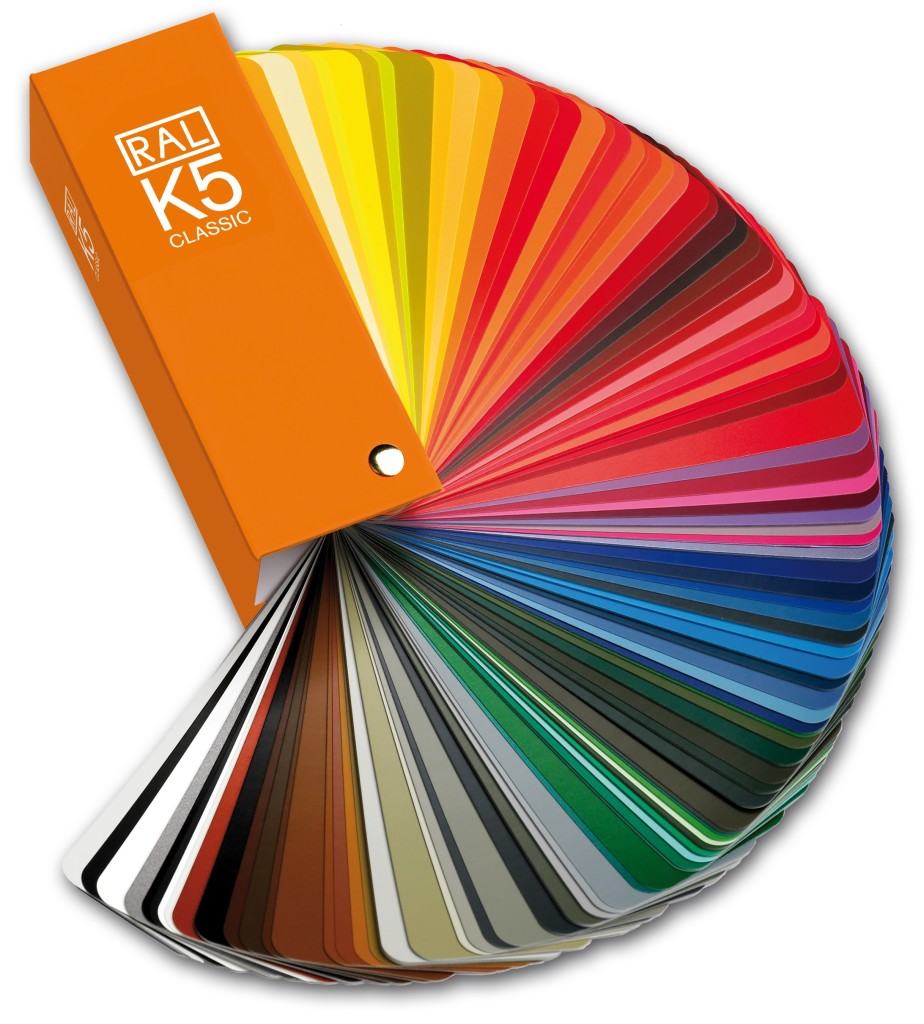
Tinted paints, or rather the coatings created with their help, are not distinguished by too bright and rich shades, since the paint can only accept a certain percentage of pigment. If you really need to do it bright accent in finishing, then for this you can use tinting compounds in their pure form.
What to consider when applying
As for the durability of the coating, it, as in the case of any other type of paintwork, is ensured not only by the paint itself, but also by the quality of preparation of the surface for its application. Everything that was said about the preparatory work in the previous chapter is also relevant in this case.
- The only thing is that when using water-dispersion paints, the walls need to be primed differently. Since wood, first of all, needs biocidal protection, it is treated with special primers before painting. There are bioprotective complexes on sale with wide range actions - they not only improve the adhesion of paint to wood, but are also an antiseptic.
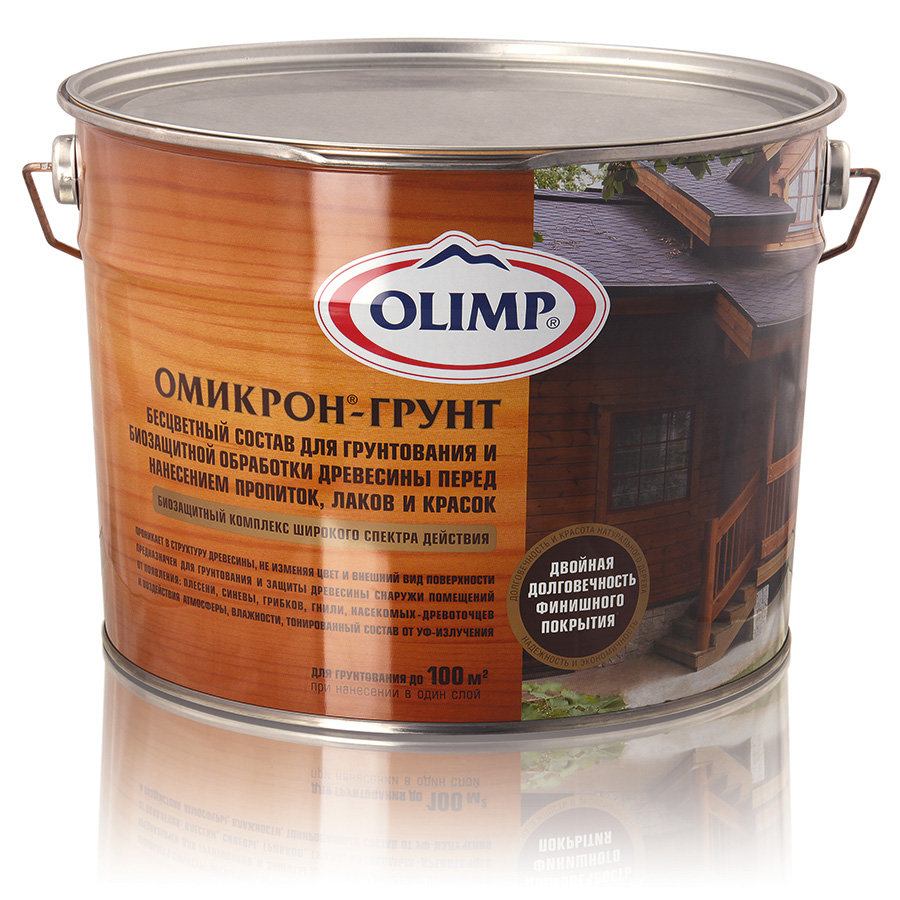
- Such primers, one of the options of which you see above, are recommended for protecting structural and facing elements made of wood, as well as windows, fences, and small architectural forms before painting. In this case, not only water-dispersion paint can be used, but also alkyd paint, as well as all kinds of glazes and impregnations, which we will talk about later.
Note! Please note that not every antiseptic can serve as a primer - you need to pay attention to this when purchasing Special attention. If a conventional fire-bioprotective composition was used, then an acrylic primer must be applied on top of it before painting.
Colored impregnations
If we continue the topic of wood impregnations, we cannot help but mention this type of finishing compositions, such as tinted antiseptics. They can be glazed, that is, they give the coating a tint while maintaining transparency and leaving the natural grain of the wood visible. In another option, colored impregnations create an opaque covering layer that completely covers the texture of the wood.
- Both compositions are used as “two in one”: both for antiseptic wood and for giving it a certain tone. In their composition, they are very similar to varnishes, only very diluted. Translucent impregnations are the most popular, as they emphasize the texture of the wood.
- In order for them to acquire antiseptic functions, manufacturers include fungicides in the composition of colored primers that prevent the growth of fungi. Alkyd resins and natural oils, which provide the soil with a water-repellent effect.
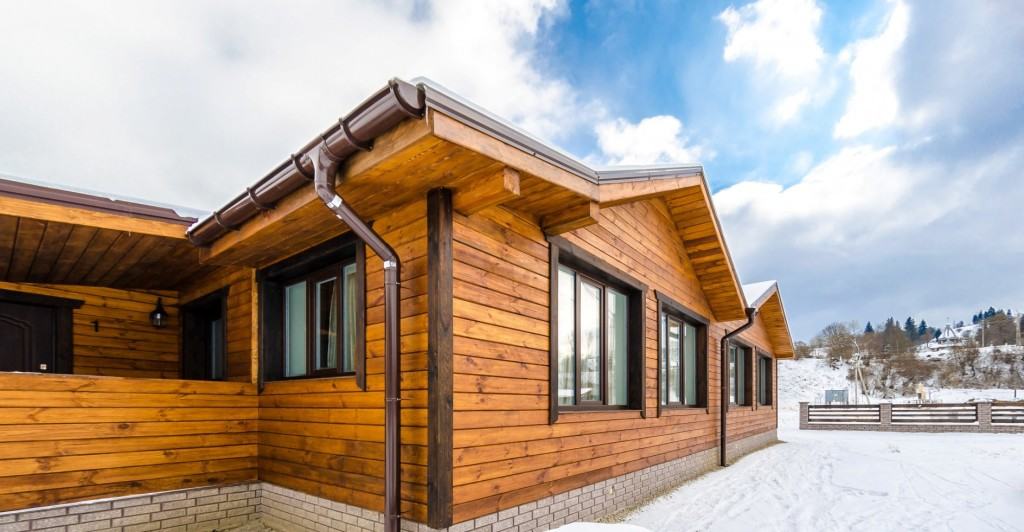
- Depending on the base, tinting impregnations for wood can be water-soluble, like the paints discussed above. They are quite economical, as they are consumed within 70g/m2. Such compositions are applied to dry wood, and preferably immediately after the walls are erected. The coating dries on average in about half a day, with normal humidity and temperature close to room temperature.
The color range of tinted impregnations is not very wide, as it represents only the shades inherent in natural wood. The compositions of many tintings include micro-components of wax, which perfectly protect the painted surface from fading, cracking, and give it a noble appearance.
Wooden house on summer cottages- a favorite place to relax. Huts can serve for many decades, while maintaining their warmth, creating a family atmosphere of comfort and coziness. It is very important that the house maintains its properties. This is why he is needed special care both inside and outside.
Protecting the log house from the outside plays an important role, since it is necessary not only to make the facade of the house look well-groomed and attractive. Let's look at other reasons for renovating the outside of a wooden house and at the same time decide how best to do it.
Most historical cultural monuments simply have not survived to this day only because wood requires careful care, and in those days there was neither knowledge nor experience for this. Wooden buildings stood for years without finishing or were simply treated with oil paints. Over time, the darkened facades resembled a very old and abandoned house, and then completely fell apart.
Nowadays, a log house is very popular, as it is very convenient to live in. The walls of a wooden house are able to regulate heat, distributing it evenly throughout the room. Thanks to this property, housing can be used both in winter and summer, because in hot weather it is cool, and in cold weather it is cozy and warm. One cannot but agree that the log house has unique property remove unnecessary moisture from the room, which creates additional comfort in the absence of constant dampness. IN wooden house There is always a feeling of comfort and tranquility. However, any home should please not only with its interior furnishings, but also with its exterior decoration.
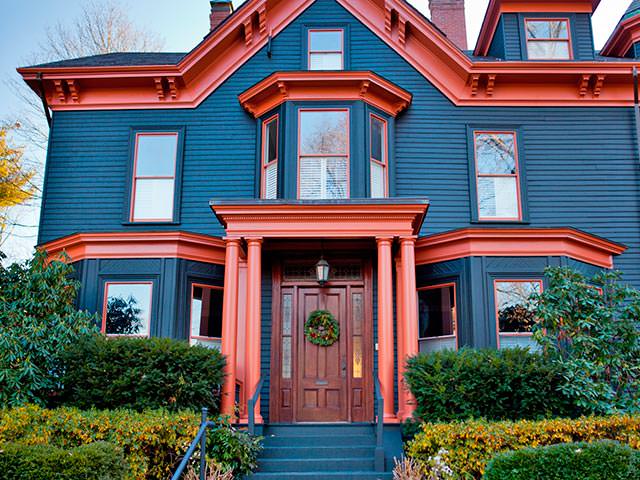
The main reasons for the constant destruction of the facade of a house can be pests and insects, external environmental influences and natural precipitation. As a result, the walls of the log house become dark, “wet” in color, mold and putrefactive deposits appear, and harmful insects appear. Without ongoing care With the help of special means of protection and treatment, your hut will begin to collapse, and the durability of the building is out of the question. Better finishing material There is no other special paint for the façade of a wooden frame. The paint performs the protective functions of wood from pests, sunlight and precipitation, and also has decorative properties. Let's talk about it in more detail.
What form of painting is best to use when repairing a facade?
The choice of painting a wooden structure should be taken seriously. Market building materials and products has a wide range, and when purchasing this or that product it is easy to get confused. Facade paints have their own variety.
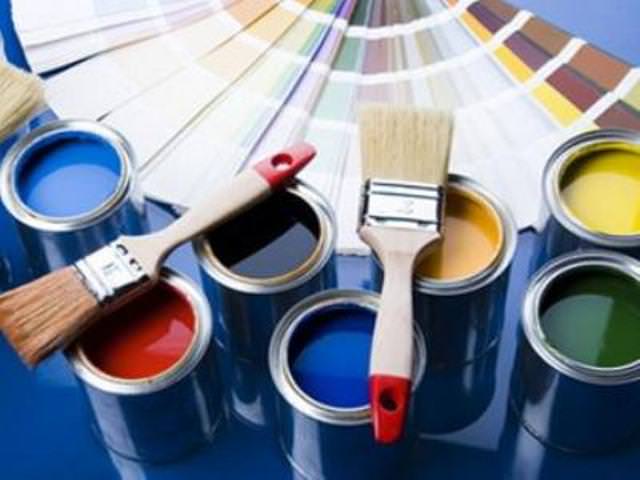
Oil coatings
The main component is drying oil. This paint is deeply absorbed into the wood, protecting it from external influences of natural factors. Among the advantages, we can highlight the cost; the option is also suitable for a small budget. However, this choice will not serve the home for many years. Numerous layers of paint will have to be changed due to poor adhesion to wood material. A significant disadvantage in painting a house with this paint is the drying time: it will take several hours, during which time the painted walls will become “overgrown” with dust and particles of dirt. Due to drying oil, the tint of the paint coating will always be yellowish.
Acrylic paints
It is believed that this is the most popular option in choosing coverage for wooden facade. What owner wouldn’t be happy if his house “overwinters” without any visible disturbances? Water- and acrylic-based paint is frost-resistant and easily withstands mechanical damage. This variety is in many ways better than oil paint products:
- allows the wood to “breathe” without clogging all the cracks during coating;
- the property of elasticity prevents peeling;
- service life is up to 8 years, which allows you to forget even about cosmetic repairs for a long time.
Water-borne antiseptic for coating
The paint contains an alkyd and acrylate base.
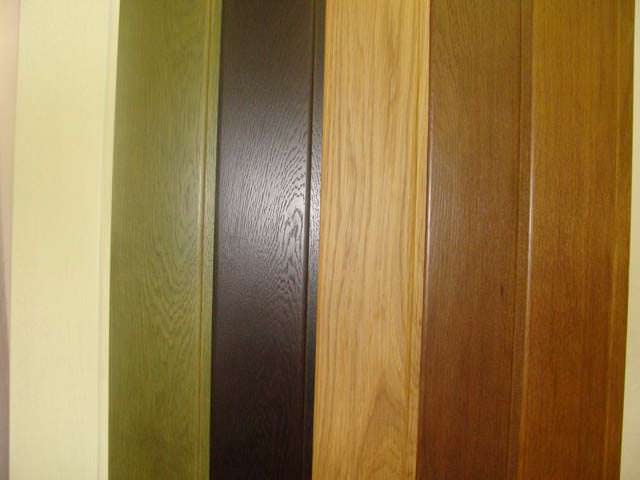
A modern type of colorful product that can be used to cover even the cheapest wood, i.e. great for any type of wood. The paint composition is used for 10 years. It should be noted that the antiseptic covers the entire wood texture, i.e. it should not be used if the wood or beams from which the house is built are of high quality and expensive material. An excellent choice when it comes to protection: thanks to deep penetration into the wood structure, the antiseptic material prevents the appearance of putrefactive deposits, mold and harmful insects.
Paint the facade: what is the best way to do it?
First of all, you should plan the process of painting the outside of the structure in several steps:
- prepare wood for painting walls;
- apply the required layer of emulsion composition;
- paint the façade surface
When are you going to paint a wooden frame? This plays an important role in the choice of coating and preparatory actions. If the wood is very fresh and the house was built recently, then most likely the wood is still damp.
You will have to wait a while before you start painting the outside walls. However, do not wait until the log house is completely dry, this can lead to negative consequences for the structure and quality of the wood material.
Preparatory stage of painting a house
You cannot start staining until you are sure that the wood is clean and well-maintained. This way the paint will have good adhesion to the surface, and the appearance of the facade will seem much more attractive and better. Stock up on water and a medium-hard brush. Remove the contaminated layer from the wooden surface. If mold or mildew is found, you should get rid of it using special means.
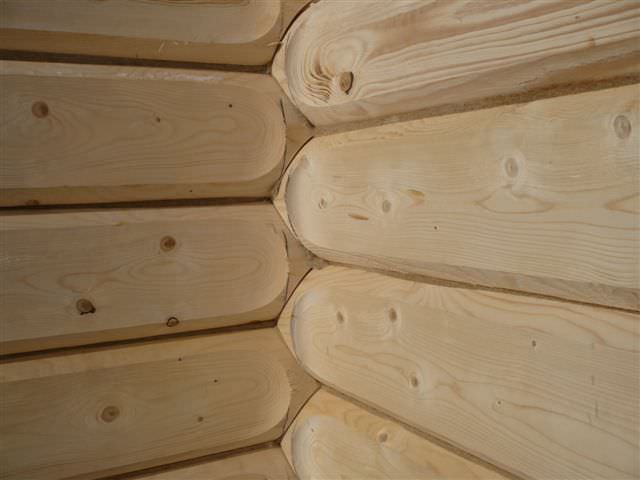
The primer must be applied either locally in places where reliefs are visible, or completely over the entire façade. Before you start painting, it is better to wait until the protective emulsion layer has completely dried (about 2 weeks).
Which type of coating is best for my log house?
For your wooden structure, you want to take high-quality materials. This is undoubtedly correct. But how do you choose it?
Since the last century, country houses and cottages have been painted with a colorful coating based on drying oil. This option is no longer relevant now, since there is a better alternative: paint containing acrylic, alkyd and water. Paint the facade alkyd paint more profitable because wood material reliably protected from low temperatures and external influences. Acrylic coatings good for interior decoration premises, as they are not particularly durable.
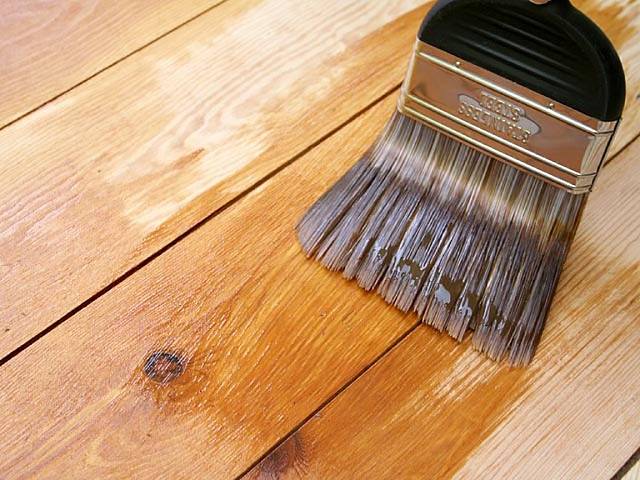
The quality of colorful products can be divided into several classes:
- "Economy class" - good protection from environmental factors, used without applying an emulsion layer.
- Classic - antiseptic solutions that have the property of protecting against external factors and elasticity. Prime before painting wooden surface not at all necessary. The service life of such coating is about 5 years.
- "Premium class" is better suited for harsh climatic conditions. The semi-gloss finish creates a long-lasting, noble look for your home. The service life of this type of paint is about 10 years. An emulsion layer is applied to ensure the durability of the coating, but it is also possible not to apply it.
Operation of a wooden structure after painting it
It is important to know that both the old and the newly built log house must be covered paint and varnish material for long term practicality. In this case, the service life depends directly on the type of painting. If a glazing antiseptic was used for your facade, it is necessary to update the layer with a fresh coating after three to five years.
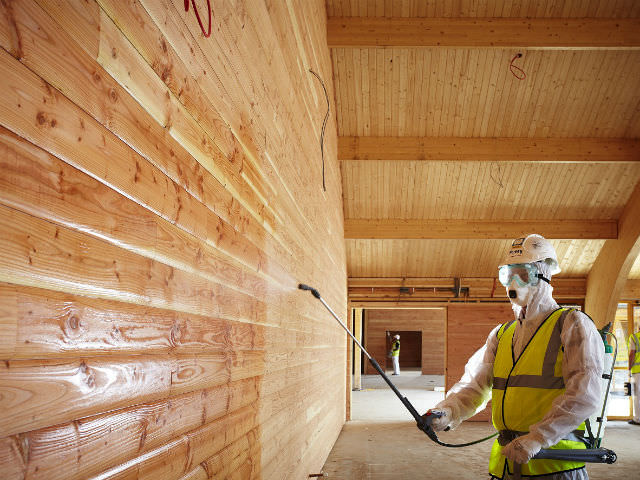
The service life of each product depends on its quality, type and composition, which react mainly to environmental influences. A coating antiseptic can serve your wood for about 7 years. Despite the decline in popularity of oil paints, their longevity is not inferior to modern analogues - five to six years. “Long-livers” based on acrylic can be easily used for 10 years.
Choosing a color scheme for the facade
It is very important not to make a mistake with this question, because the appearance of the structure depends on it, which awakens special impressions. The most important thing is to paint the log house in a color that will not only ennoble your country house or cottage house, but will also bring you comfort and positive emotions. For this color scheme it is necessary to choose, combining colors window frames, doors, roof and other details of the building, so that it all looks harmonious, and only the advantageous sides of the facade stand out.
How to properly apply paint to a wood surface?
In order to paint the facade evenly and correctly, you should follow some rules:
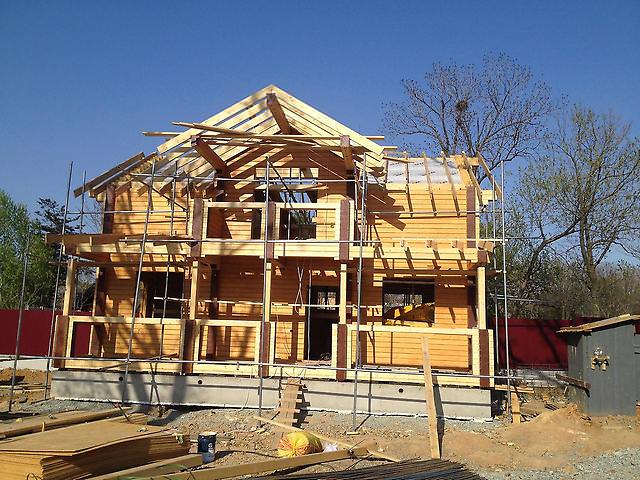
If the log house has already been painted and it is time to update the facade, take a closer look at surface defects. If they are missing, determine the previous type of paint product. Acquiring the necessary supply of high-quality and suitable material will allow you to prepare the surface for repair. By washing away dirt and dust with water, it is necessary to clean the surface from the previous layer of paint. To do this, you will need a scraper or a medium-hard brush. If old rotten boards are found, they should be updated to avoid the spread of fungus and mold throughout the facade.
If on your suburban area If you have just completed a wooden construction, do not rush to fill it with paint. Fresh wood should be given 2-3 weeks to dry. Next, apply a layer of emulsion coating and again be patient. When applying a paint coating, it is important to avoid smudges, darkening and crooked lines. To do this, treat all convex parts of the facade with several layers of primer.
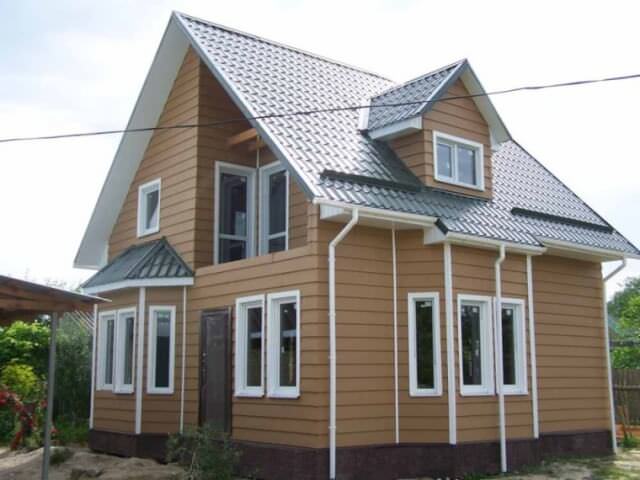
Make every effort to ensure that your house is the envy of your neighbors. Agree, it is very comfortable and cozy to live in a house that looks well-groomed, modern and attractive not only from the inside, but also from the outside. outside. The main thing in a beloved home is harmony, warmth and comfort. Correct painting of the facade, amazingly accurate combination of all details, spacious interior and cozy atmosphere will make you love your nest even more. You are trying only for yourself and your family, which means you should not be sorry for either money or time to maintain the longevity of the log house. We assure you that all the tips will be useful.
